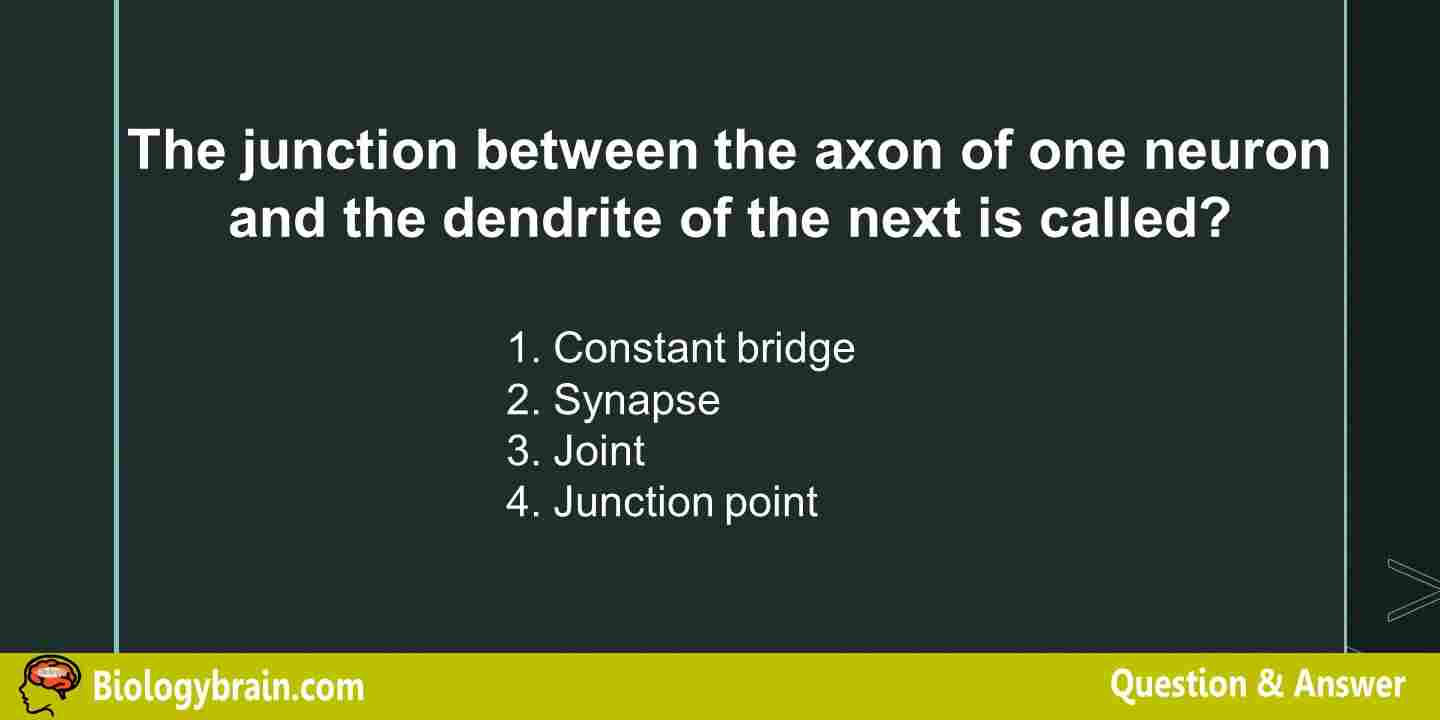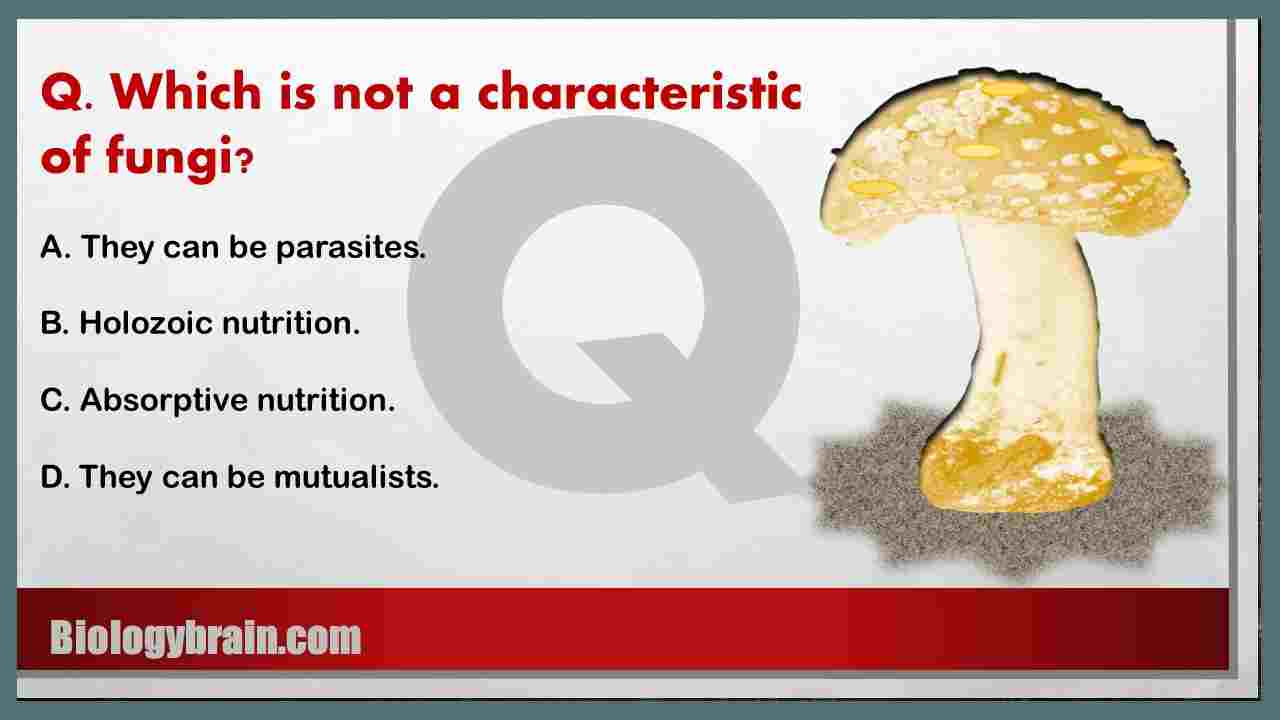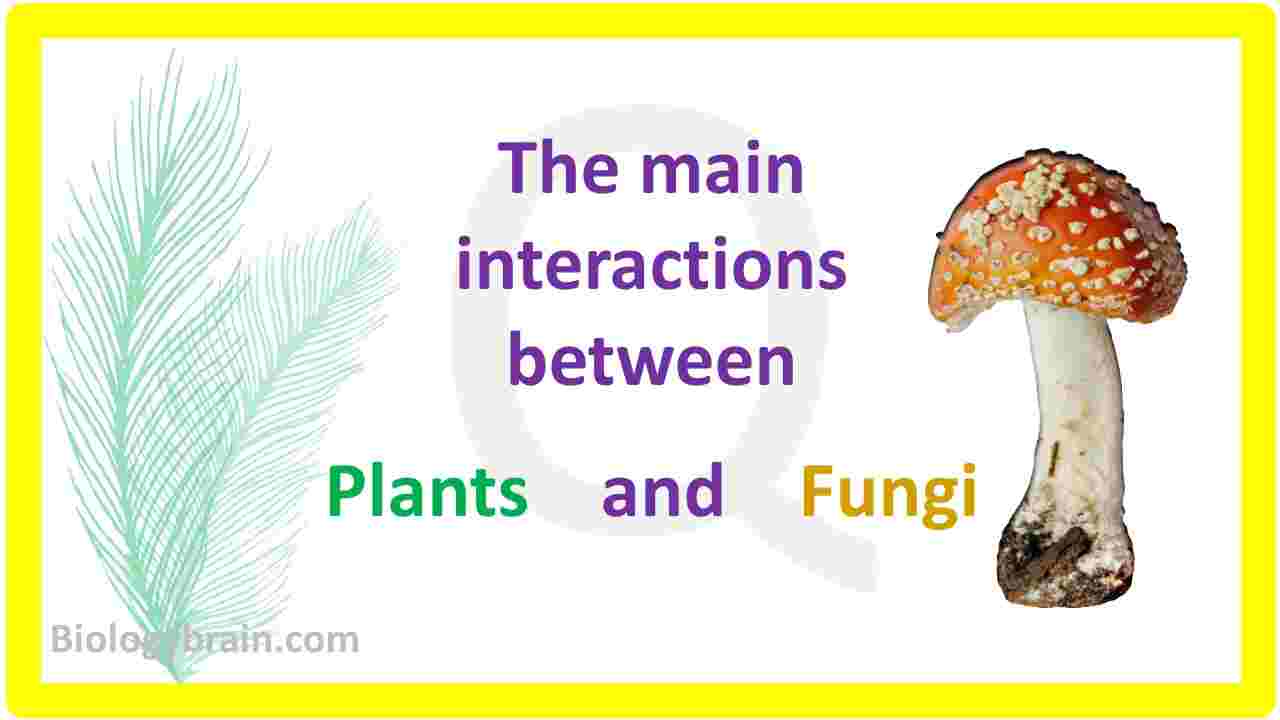Q. The junction between the axon of one neuron and the dendrite of the next is called
1. Constant bridge
2. Synapse
3. Joint
4. Junction point
Answer: 2 (Synapse).
Explanation:
In the central nervous system, a synapse (plural: synapses) is a small gap (junction) at the end of a neuron. This junction allows nerve cells or neurons to send chemical or electrical signals to other neurons. Synapses are found between the axon of one neuron and the dendrite of the other neuron. Synapses are involved in the brain’s functions, especially when it comes to memory.
Important questions:
Q. The alpha-helix and beta-sheet are found at which level of protein organization?
Q. Which cytoskeletal proteins provide the structural support for microvilli?
Q. Which of these does not contain a structural protein?
Q. What level of protein structure is associated with the sequence of amino acids?
Q. Which of the following pertains to typhoid fever?
Q. Which of the following tests is an agglutination test for the bacterium causing typhoid fever?
Q. This is a compound made from a group of covalently bonded atoms?
Q. If two covalently bonded atoms are identical the bond is?
Q. Which of the following are characteristics of G protein-coupled receptors (GPCR)?
Q. What are the second messengers in the GPCR-phospholipase c signal transduction system?
Q. Which of the following have a significant influence on a material’s electrical resistivity?











